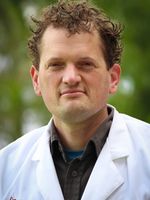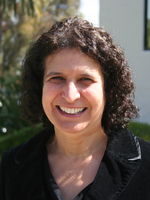Tobacco use is the leading preventable cause of cancer death worldwide, claiming more than 6 million lives each year. Both in our community and globally, tobacco use is a health disparity — most users live in poverty. The Transdisciplinary Tobacco Research Program fights this epidemic on three research fronts:
- Basic science, studying cardiovascular, neurological and cancer outcomes after prenatal tobacco exposure
- Clinical research into low-cost tobacco cessation treatments
- Population-based research on implementing tobacco control policies
Through these efforts, we hope to reduce tobacco use and cancer mortality disparities both in our community and around the world.
Reducing Lung Cancer Mortality
Screening & Prevention
To reduce lung cancer deaths in our community, a prevention path was developed and implemented in our hospitals. Patients with a history of smoking are provided resources to help them stay healthy:
- Counseling for smoking cessation to prevent further damage
- Low-dose CT (LDCT) scanning to identify potential issues while reducing radiation exposure of lung tissue versus other imaging techniques
- Sophisticated analysis of screening results to identify if and when a patient should see various specialists
- Reminders to follow-up and continue regular screening
Screening these high-risk patients with LDCT early and often has the potential to reduce lung cancer mortality by up to 20%.
Cessation Before Lung Cancer Surgery
In order to reduce lung cancer mortality, patients are encouraged to quit or reduce tobacco use before surgery. Doing so can reduce surgical complications and long-term mortality.
Program Overview
The Transdisciplinary Tobacco Research Program builds upon work done at Loma Linda University Health in patient smoking and cancer programs. These programs have gathered data on how best to help patients both overcome nicotine addiction and reduce their risk of cancer. Our program leverages this foundation of knowledge to inform research efforts aimed at helping tobacco users worldwide and reducing cancer mortality.
Basic Science Research: Tobacco & Epigenetics
Dr. Daliao Xiao’s research has identified epigenetic effects related to prenatal exposure to nicotine. These include detrimental effects on cardiovascular and neurological health. Dr. Xiao and Dr. Singh will investigate if prenatal exposure to smokeless tobacco also has a lasting effect on a child’s non-communicable disease outcomes.
Clinical Research: Low-Cost Tobacco Cessation Drugs
Over 80% of smokers live in low and middle-income countries (LMICs), making smoking a health disparity. Even most smokers in our community and across the U.S. live at or below the poverty line. Our program seeks to investigate cessation options that everyone can afford.
The pharmaceutical industry has several popular but expensive tobacco cessation treatments (like varenicline) and is now working toward low-cost options for smokers. Cytisine, a plant-based smoking cessation aid, has shown promise as a low-cost alternative. Instead of hundreds of dollars — which almost all low-income smokers cannot afford — cytisine would cost about $20. Currently, cytisine is in stage three clinical trials to bring it to the U.S.
Cytisine Clinical Trials in Mongolia
Dr. Singh is leading a research effort in Mongolia to identify cytisine’s efficacy and viability for low-income smokers. His research, funded by the Pfizer Foundation, has created a free cessation program for patients in nine Mongolian hospitals. This research could help expand availability of cytisine to more people who need help quitting.
Dr. Singh believes low-cost cessation drugs like cytisine represent significant opportunities to help smokers in low-income communities everywhere. Our hospitals provide care to a large population of underserved people in San Bernardino County. These drugs could mean impactful health improvements for our patients and reduced cancer mortality in our area.
San Bernardino Cessation Program Research
Dr. Anne Berit Petersen and Dr. Singh are investigating the efficacy of the Comprehensive Tobacco Treatment Program. Run by Loma Linda University Health, this is the largest cessation program for mothers in San Bernardino County. Though it has a high dropout rate, a significant number who participate quit smoking.
Dr. Petersen’s research has shown that there is ample opportunity to improve community health through this existing program. Innovative, culturally competent outreach methods need to be developed to reduce dropouts from this otherwise successful smoking cessation model. Expanding programs like this can help improve the health of mothers and children and reduce their cancer risk.
The team has also shown that supporting programs like this actually costs less overall. For every 35 mothers in the county who quit, one preterm birth is prevented. Helping those moms quit has a total cost of $3,500, while not helping costs $1 million and risks a child’s life.
Tobacco Cessation for Cancer Survivors
Our community is home to a large population of cancer patients. Many complete treatment for lung and other cancers at our hospitals. Unfortunately, a number of cancer survivors continue to use tobacco, despite increased risks of chronic health conditions and death.
Our program looks to expand Loma Linda University Health’s existing cessation resources by adding a support path for cancer survivors. Survivors may be unaware of the continued benefits of quitting after cancer. Patient education, outreach and cessation resources tailored to survivors may help improve health outcomes in our community.
Population-Based Research: Tobacco Use & Policy
Since 2002, the Global Tobacco Prevention and Control Program has been fighting tobacco use in Asia. The program is part of the Loma Linda University School of Public Health and is funded by the National Institutes of Health, World Health Organization, Gates Foundation and ASPPH. In 2005, Mongolia, Laos and Cambodia adopted WHO’s Framework Convention on Tobacco Control. The framework aims to reduce both demand for and supply of tobacco products.
Despite tobacco-restricting policy changes in these three countries, tobacco use is still rampant. Research efforts led by Dr. Singh concluded that cigarette usage continued even in children and teens. Dr. Singh and his team continue to study tobacco use and policy efficacy through a 2017 NIH grant for $1.4 million.
Program Members
Director
Collaborating Faculty
Peer-Reviewed Scientific Reports
Loma Linda University Health Tobacco Research Papers at NCBI
Grants
5R01TW005964-08 (Singh, Pramil)
Sponsor: Fogarty International Center
Title: Building GIS Capacity Into Tobacco Control Research Programs Of East Asia
5R03DA041492-02 (Xiao, Daliao)
Sponsor: National Institute On Drug Abuse
Title: Nicotine-mediated Fetal Programming Of Vascular Dysfunction Phenotype
5R01HD088039-03 (Xiao, Daliao)
Sponsor: Eunice Kennedy Shriver National Institute Of Child Health & Human Development
Title: Mirna As A Novel Therapeutic Target In Antenatal Nicotine-induced Ischemic Heart
Cytisine Grant (Singh, Pramil)
Sponsor: Pfizer Foundation
Title: Comparative effectiveness of cytisine versus nicotine replacement therapy (NRT) in the National Smoking Cessation Program of Mongolia: A pragmatic non-inferiority trial
Perinatal Smoking Cessation Program Grant
Sponsor: March of Dimes
Title: Comprehensive Tobacco Treatment Program
California Department of Health Grant (Singh, Pramil)
Sponsor: California Department of Public Health
Title: Priority population research on comprehensive tobacco control for San Bernardino County














